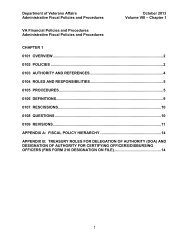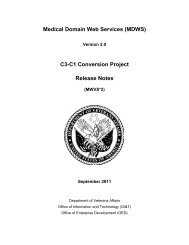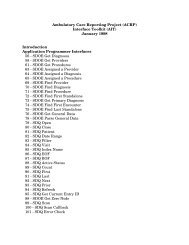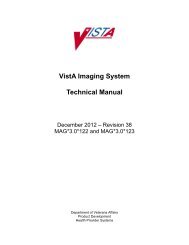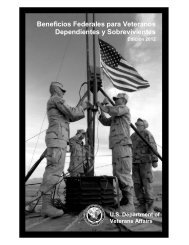Optimal Temperature for Cardioplegia During Coronary Artery ...
Optimal Temperature for Cardioplegia During Coronary Artery ...
Optimal Temperature for Cardioplegia During Coronary Artery ...
You also want an ePaper? Increase the reach of your titles
YUMPU automatically turns print PDFs into web optimized ePapers that Google loves.
OPTIMAL TEMPERATURE FOR CARDIOPLEGIA FINAL REPORT<br />
II. METHODS FOR SYSTEMATIC REVIEW<br />
A. Scope of review<br />
As the question that initiated this review related only to the optimal temperature of<br />
cardioplegia <strong>for</strong> myocardial (rather than brain function) preservation, this review will be<br />
confined to the research literature that may clarify that issue.<br />
B. Search strategy<br />
VATAP searched MEDLINE®, HealthStar®, and EMBASE® on November 1999, June<br />
2000, January 2001, and September 2003 using the terms “cardioplegia,”<br />
“cardiopulmonary bypass,” and “outcomes.” In searches after the first, all references<br />
containing cardioplegia and human were retrieved and examined.<br />
Reference lists of initially obtained articles were examined to identify additional<br />
randomized controlled trials (RCTs). Finally, the databases of the Cochrane<br />
Collaboration and the International Network of Agencies <strong>for</strong> Health Technology<br />
Assessment (INAHTA) were searched to identify existing assessments.<br />
One reviewer (KF) applied article selection criteria (below) and conducted the review,<br />
which was then critiqued by VA reviewers noted under “Acknowledgements”.<br />
C. Selection criteria<br />
Rationale <strong>for</strong> article selection criteria<br />
Evidence grading schemes routinely assign the highest grade to systematic reviews of<br />
RCTs (Cook, 1992). There<strong>for</strong>e, any such review identified in the searches that directly<br />
addressed the assessment question would provide the core evidence <strong>for</strong> this report.<br />
Since the next highest grade of evidence is assigned to RCTs themselves, this report<br />
preferentially selects <strong>for</strong> RCTs.<br />
While RCTs remain the research design of choice <strong>for</strong> testing hypotheses regarding a<br />
causal relationship between an intervention and particular outcomes, analyses of large<br />
databases or registries can make contributions to technology assessment (Antczak-<br />
Boukoms, 1991), including the evaluation of surgical procedures (Davis, 1991), and of<br />
particular technological processes within those procedures (Burdick, 1991). There<strong>for</strong>e,<br />
analyses of large data sets were also included in the review.<br />
Article Selection Criteria, RCTs:<br />
• RCTs comparing CPB at different temperatures during CABG in humans and<br />
reporting cardiovascular outcomes;<br />
• Articles in English (or with English abstracts in sufficient detail to provide required<br />
in<strong>for</strong>mation) published after 1990 (since research clarifying changes in the routinely<br />
used temperature of CPB has been published since that date).<br />
VA OPCS Technology Assessment Program http://www.va.gov/vatap 8






